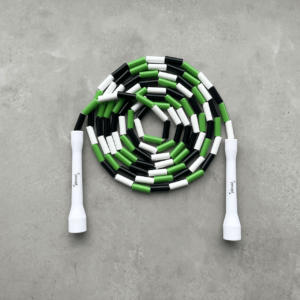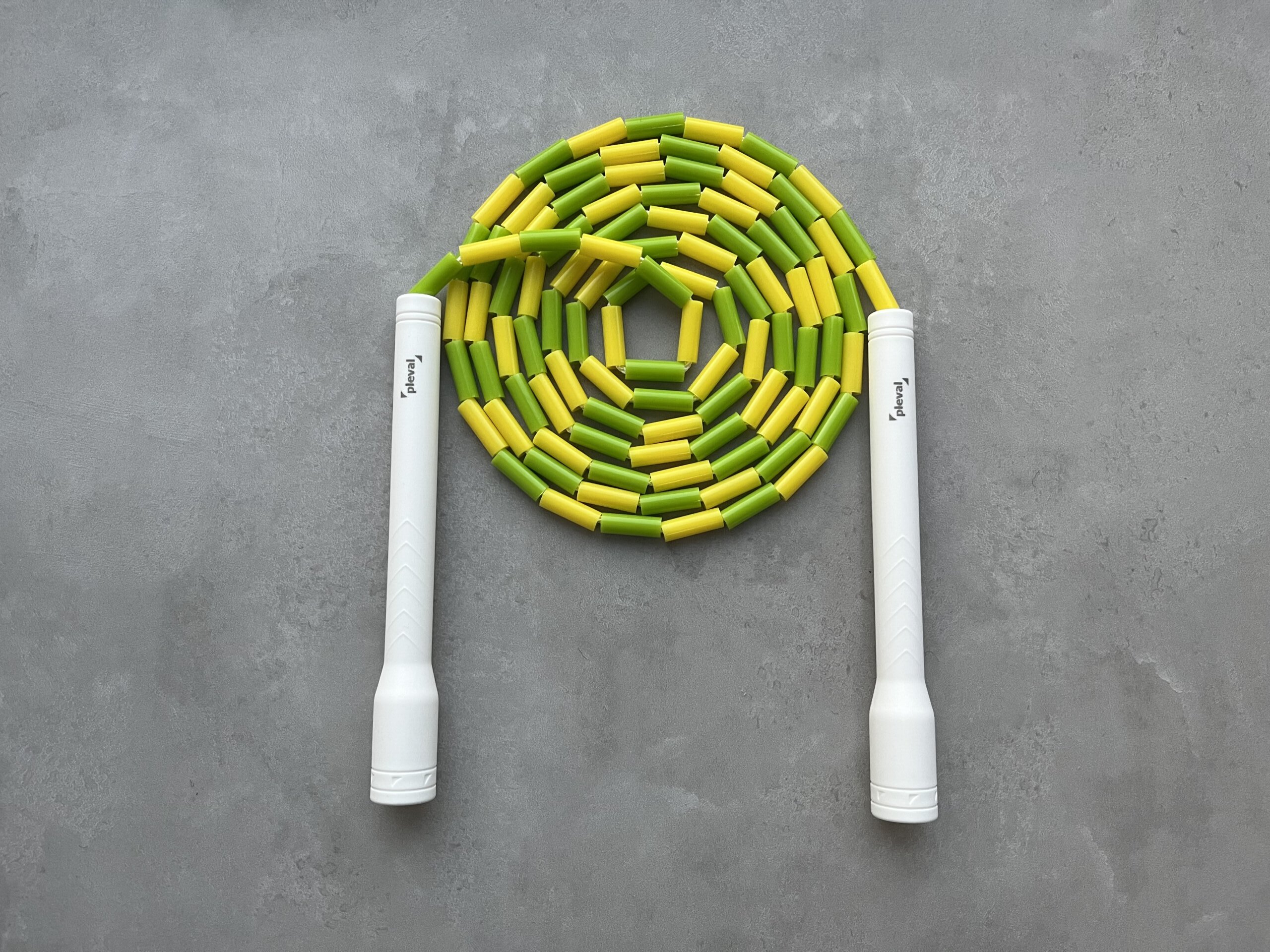Pleval is one of the most popular and reliable fitness product manufacturers in China. We have rich industry experience and our main products include PVC jump rope, beaded jump rope, beach racket, pickleball, flex racket, etc. We have successfully supported the growth of many online customers by providing trend forecasting, one-stop procurement solutions, and strict quality control. We have served thousands of global clients and enjoy a good reputation in the industry.
Double dutch jump rope is a kind of sports equipment that can both relax and promote health. It can slowly increase heart rate, enhance heart and lung functions, burn fat, reduce tension, strengthen physique, strengthen reflexes and muscle groups, reduce aging, increase resistance and vitality, and help maintain the shock sports. Rope skipping can also be carried out indoors or outdoors, and is a sport that almost everyone can play safely and relaxed.
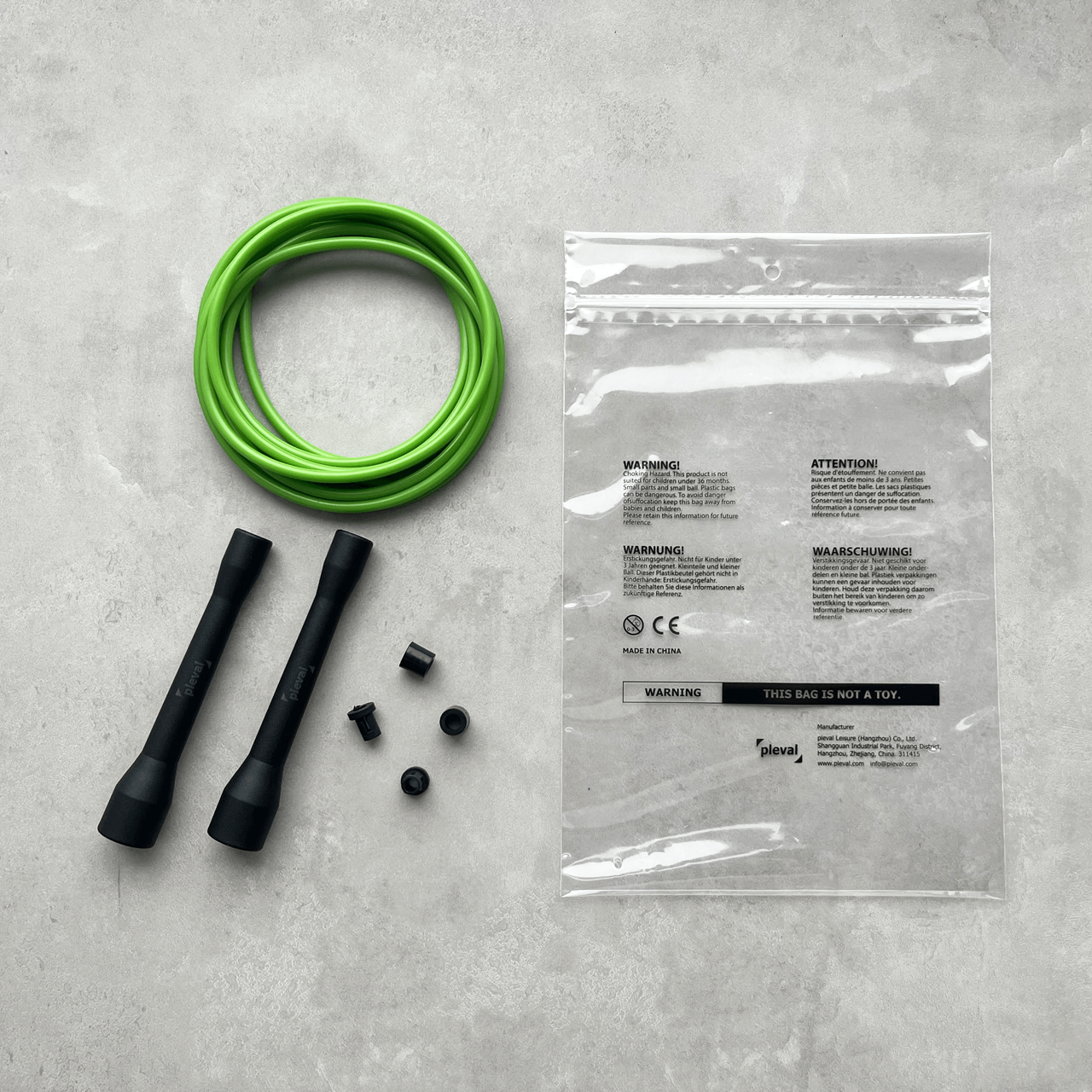
Double dutch jump rope is a classic and exciting activity that will make your heart beat faster! Unlike other fitness habits, skipping rope can also exercise your thinking while learning techniques and setting routines. With jump rope, you can use it to add some interesting changes to your daily life.
Double dutch jump rope is an interesting and comprehensive aerobic exercise. It can not only help improve the cardiopulmonary endurance, but also help strengthen muscles, promote health and enhance vitality. It can change your lifestyle, greatly reduce the burden on your heart, and improve your mental state at the same time. Rope skipping is very interesting. It can be done at home or outdoors. It can improve fitness level, save time, improve sleep quality, reduce depression, enhance memory and visual space expression, and stimulate interest in rope skipping.
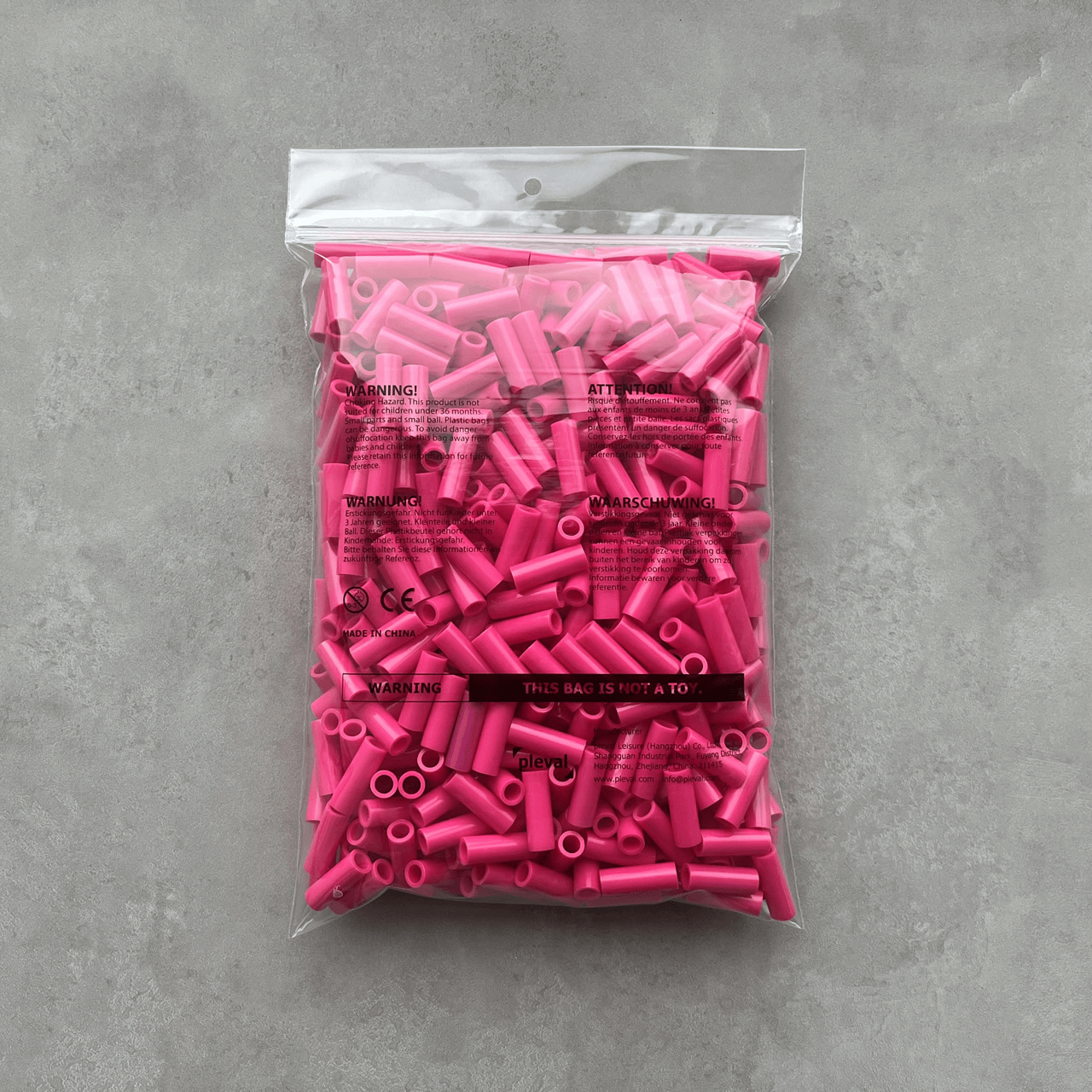
Why choose us?
Double dutch jump rope–A Guide to Frequently Asked Questions
2.How do speed jump ropes differ from traditional jump ropes, and who are they best suited for?
3.What are the primary materials used in the construction of jump ropes?
4.What types of handles are commonly used on jump ropes, and how do they affect grip and comfort?
5.How do jump ropes adjust to varying floor surfaces, and are there specific recommendations for indoor vs. outdoor use?
6.What is the importance of choosing the right jump rope for one’s height and skill level?
7.Are there jump ropes specifically designed for children or beginners?
8.How do jump rope cables vary in terms of thickness and material, and what impact does this have on performance?
9.How do jump ropes accommodate users with different fitness goals, from weight loss to endurance training?
10.What are the recommended maintenance and care instructions for preserving the quality of jump ropes?
11.How are double dutch jump rope designed to prevent tangling and twisting during use?
12.How do jump rope handles accommodate users with different hand sizes or grip preferences?
1.What is the typical durability and lifespan of a high-quality jump rope?
A high-quality jump rope should last for several years with proper care and maintenance. The exact lifespan will depend on the material and construction of the rope, as well as how often it is used and how it is stored. Generally, a good quality jump rope should last for several years of regular use.
2.How do speed jump ropes differ from traditional jump ropes, and who are they best suited for?
Speed jump ropes are designed to be used for high-intensity interval training and are best suited for athletes and fitness enthusiasts who are looking to increase their speed and agility. They are typically made of a lightweight material such as nylon or PVC and feature a ball bearing system that allows for faster rotation. The handles are usually shorter and lighter than traditional jump ropes, making them easier to maneuver. Speed jump ropes are also designed to be used on a variety of surfaces, including concrete, asphalt, and grass.
3.What are the primary materials used in the construction of jump ropes?
The primary materials used in the construction of jump ropes are nylon, leather, and PVC. Nylon is the most common material used, as it is lightweight and durable. Leather is also used for heavier ropes, as it is more durable and provides more resistance. PVC is a lightweight and inexpensive material that is often used for beginner jump ropes.
4.What types of handles are commonly used on jump ropes, and how do they affect grip and comfort?
The two most common types of handles used on jump ropes are plastic and foam. Plastic handles are usually more durable and provide a better grip, but can be uncomfortable for long periods of time. Foam handles are more comfortable and provide a better grip, but are not as durable as plastic handles. Both types of handles can be used to improve grip and comfort, depending on the user’s preference.
5.How do jump ropes adjust to varying floor surfaces, and are there specific recommendations for indoor vs. outdoor use?
Jump ropes are designed to adjust to varying floor surfaces. For indoor use, it is recommended to use a jump rope with a foam or rubber handle and a PVC or nylon rope. This type of rope is designed to be lightweight and flexible, allowing it to move easily over carpet, tile, and hardwood floors. For outdoor use, it is recommended to use a jump rope with a rubber or plastic handle and a thicker rope made of nylon or polyester. This type of rope is designed to be more durable and resistant to wear and tear from outdoor surfaces such as concrete, asphalt, and grass.
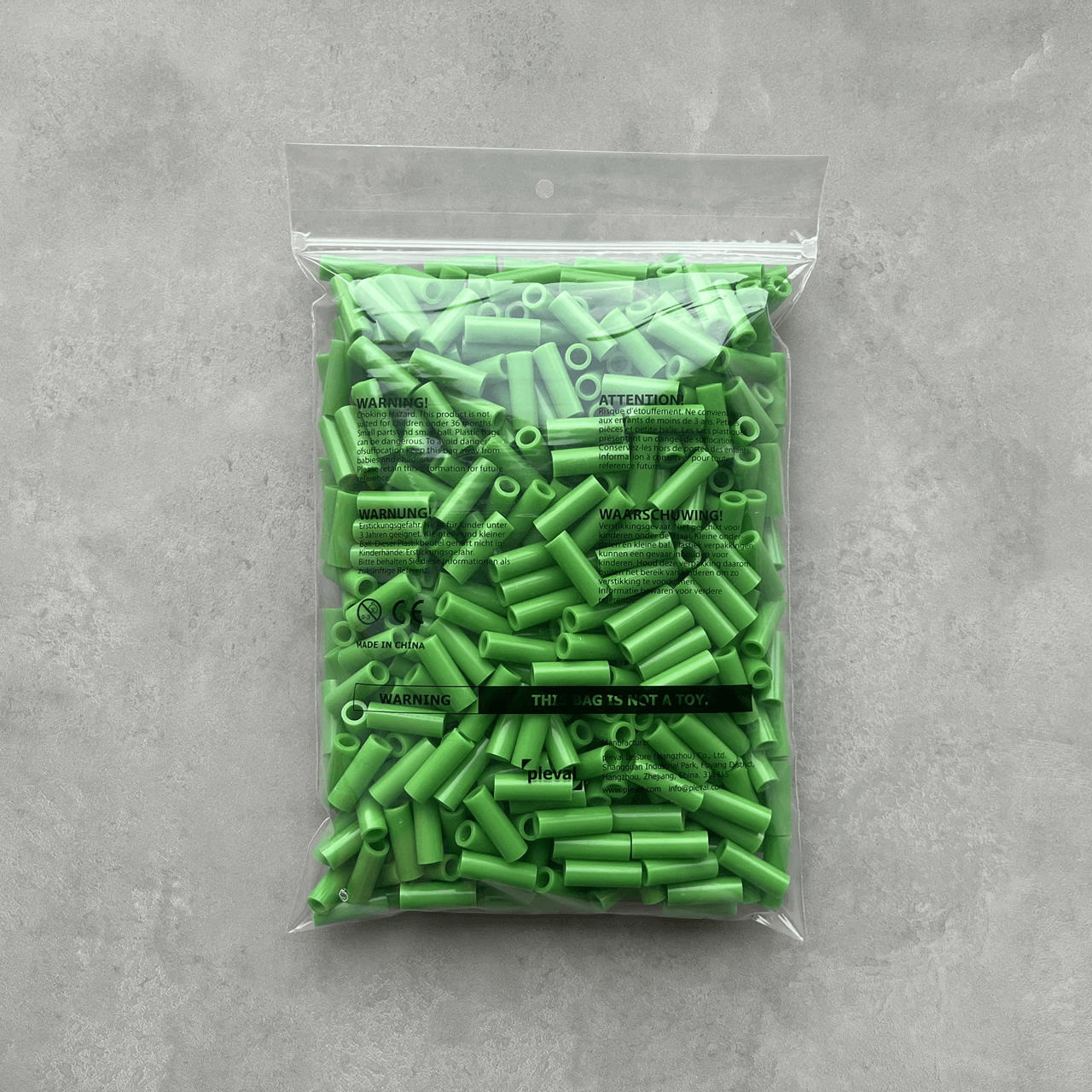
6.What is the importance of choosing the right jump rope for one’s height and skill level?
Choosing the right jump rope for one’s height and skill level is important because it helps to ensure that the rope is the correct length and weight for the user. A rope that is too long or too heavy can be difficult to use and can lead to injury. A rope that is too short or too light can also be difficult to use and can lead to poor technique and inefficient workouts. The right jump rope will help the user to maximize their workout and minimize the risk of injury.
7.Are there jump ropes specifically designed for children or beginners?
Yes, there are jump ropes specifically designed for children or beginners. These jump ropes are typically shorter in length and have lighter handles to make them easier to use. They may also have thicker ropes to make them easier to grip.
8.How do jump rope cables vary in terms of thickness and material, and what impact does this have on performance?
Jump rope cables vary in terms of thickness and material, and this can have a significant impact on performance. Thicker cables are generally heavier and slower, making them better for beginners who are just learning the basics of jump rope. Thinner cables are lighter and faster, making them better for more advanced jumpers who are looking for a more intense workout. The material of the cable can also affect performance. Cables made of nylon or PVC are more durable and can handle more intense workouts, while cables made of wire are lighter and faster.
9.How do jump ropes accommodate users with different fitness goals, from weight loss to endurance training?
Jump ropes can accommodate users with different fitness goals by allowing them to adjust the intensity of their workout. For weight loss, users can increase the speed of their jumps and the duration of their workout to burn more calories. For endurance training, users can increase the number of jumps per minute and the duration of their workout to build up their stamina. Additionally, users can adjust the length of the rope to accommodate their height and the type of rope to accommodate their skill level.
10.What are the recommended maintenance and care instructions for preserving the quality of jump ropes?
1. Store your jump rope in a cool, dry place away from direct sunlight.
2. Clean your jump rope regularly with a damp cloth and mild soap.
3. Inspect your jump rope for any signs of wear and tear, such as fraying or broken strands.
4. Replace your jump rope if it shows signs of wear and tear.
5. Avoid using your jump rope on rough surfaces, such as concrete or asphalt.
6. Avoid using your jump rope in extreme temperatures.
7. Avoid using your jump rope in wet conditions.
8. Avoid using your jump rope on sharp or abrasive surfaces.
9. Avoid using your jump rope near open flames or other sources of heat.
10. Avoid using your jump rope near electrical outlets or other sources of electricity.
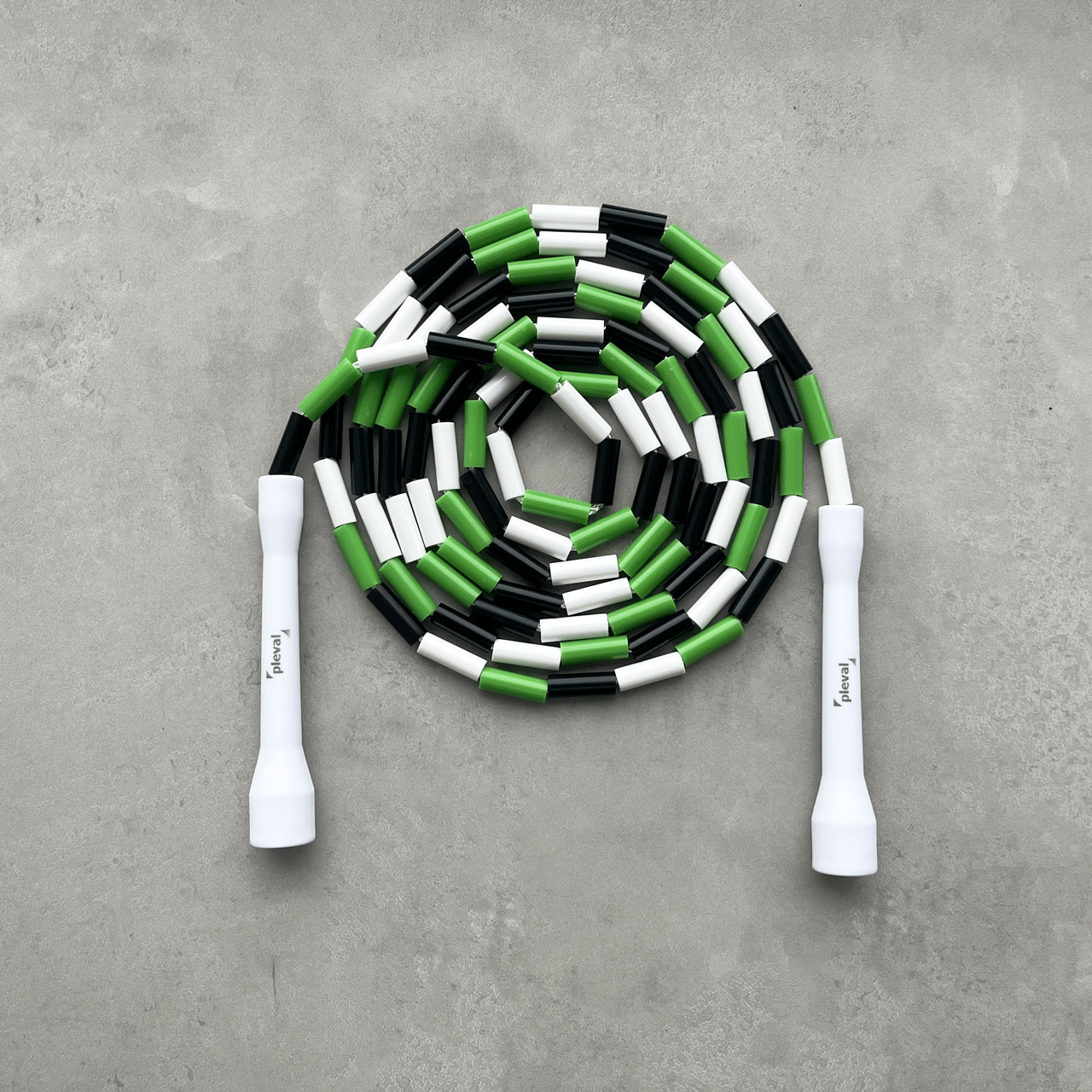
11.How are double dutch jump rope designed to prevent tangling and twisting during use?
double dutch jump rope are designed with a swivel-bearing system that allows the rope to rotate freely and prevents it from tangling and twisting. The swivel-bearing system is usually located at the end of the rope, where the handles are attached. This system allows the rope to rotate freely and prevents it from twisting and tangling. Additionally, some jump ropes are designed with a weighted handle that helps keep the rope from tangling and twisting.
12.How do jump rope handles accommodate users with different hand sizes or grip preferences?
Jump rope handles can accommodate users with different hand sizes or grip preferences by offering handles of different sizes and shapes. Some handles are designed with a larger grip to accommodate larger hands, while others are designed with a smaller grip to accommodate smaller hands. Some handles also feature ergonomic designs to provide a more comfortable grip. Additionally, some handles are designed with a textured surface to provide a better grip for users with different grip preferences.
Tags: Beaded jump rope , PVC jump rope

